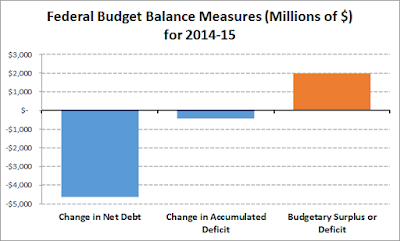
(I put "creating" in quotations, since governments only *create* public-sector jobs, though they have an important role in ensuring a good environment for private sector job creation.)
Is 1.3 million by 2020 a reasonable number? There has been an active twitter discussion on the merits of this number, and the consensus seems to be a cautious "yes". Cautious because while it may be reasonable, it is by no means automatic and depends on how fast the economy grows between now and 2020 or how large immigration flows are between now and then. As I haven't seen more than 140 characters worth of analysis of this at a time, I thought I would put my own thoughts down to explore the numbers. (Please tell me if I've missed someone else's analysis. For detailed tweets that support the figures below, see @kevinmilligan's feed)
First, a rough back of the envelope trend of monthly employment growth, projected out to 2020, is very much in line with the 1.3 million number. Over the past 15 years, the monthly average net new job creation is about 17,700. Projected out 64 months to December 2020 (to be generous), yields just over 1.1 million.
Of course, our population is ageing so history may be of very little guide. In fact, our population is ageing so quickly that basically ALL of statistics Canada's projected population growth for Canada comes from those over the age of 55. Not too surprising, as a good chunk of Canada's population is already over 55:

More than an ageing population, we also likely to have a slightly falling population among the younger age groups. Here are Statistics Canada's projections:

Notice they have various scenarios. I've included the Low, Medium, and High scenarios. This will be useful in the analysis to come.
As employment rates (the fraction of people working) vary dramatically across age groups, this is a very important fact to consider. Let's look:

The 20-24 and 25-54 age groups have a fairly stable employment rate . They are currently 68.6% and 81.5%, respectively. Pre-recession, their employment rates were slightly higher, at around 71% and 82%. Returning to pre-recession employment rates will be an important part of meeting the 1.3 million net new job goal.
So, with all this in mind, we're ready to forecast out future net new jobs created between now and 2020. If we know the change in an age group's population, and it's projected employment rate, we can forecast the projected employment.
Let's start with NO change in employment rates:

Not quite there. Under the high growth scenario, we're looking at 700,000 net new jobs by 2020 -- roughly half the goal.
What if all employment rates returned to their pre-recession rates (with the exception of the 55+ group, which I'll keep at it's current level):
That's getting closer! But, still not quite there. Even the high growth scenario for population is about a quarter million new jobs short of the goal.
So, what will it take? Well, two facts are important:
1) There is very little prospect for much higher employment rates among prime-age workers. We saw in the earlier graph that they've been fairly stable.
2) There are *a lot* of people going to be 55+ by 2020. Changes in their employment rates will therefore be critical.
The increase in 15-19 year old's employment rate won't really matter too much.
By how much must we increase the employment rate among those 55+ in order to have a reasonable chance of meeting the 1.3 million goal? It must rise from it's current 35% to roughly 39%.
Or, perhaps we could dramatically increase the 15-19 year old employment rate to 50%. Then we would only need to increase the employment rate among the 55+ group to 38%.
So, what all this tells me is that 1.3 million new jobs by 2020 is entirely feasible. It would require populations grow at the Medium or High scenarios of Statistics Canada. Immigration can help ensure this is the case. It will also require we increase employment rates among those above the age of 55. What the most effective policies are to achieve this is far beyond the scope of this blog post, so I'll let that one go. But, given that the employment rates among this group have risen so dramatically in recent years (from 20% in the mid-90s to 35% today), a further increase to 39% doesn't seem ridiculous.


















